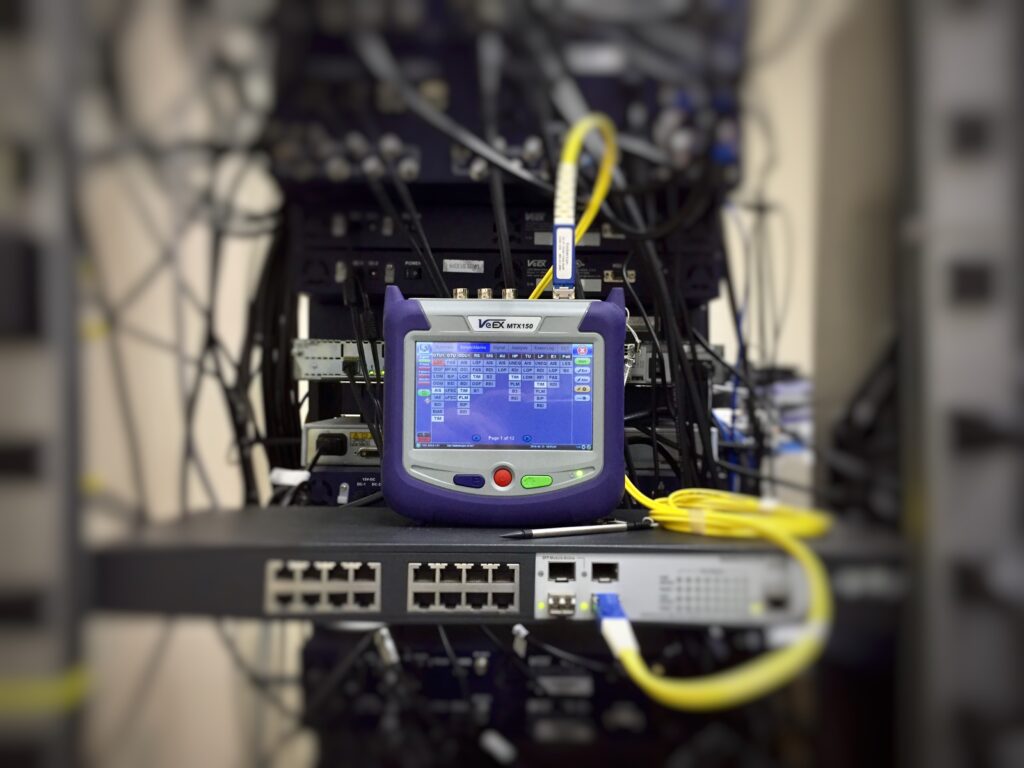Convert dBm to Watt
Enter a value in dBm to convert to Watts:
Convert Watt to dBm
Enter a value in Watts to convert to dBm:
Understanding dBm
To Convert DBm to Watt, We need to understand the basics of the dB and its importance in signal measurement. Decibel, often abbreviated to dB, is a logarithmic unit which is used in expressing the ratio between two values, typically power or amplitude. It provides a easy way to represent both large and small changes in signal strengths.
Now, when looking into dBm, dBm is a variant of decibel scale that is used in measuring power, relative to one milliwatt ( 1 mW ). It is widely used in telecommunication in quantifying Singal Power level in a manageable and meaningful way.
dBm to Watt Conversion Formula
The formula to convert dBm to Watt is as follows,
P(W) = 10P(dBm)/10
Where:
- P(W) represents the power in Watts,
- P(dBm) is the power in dBm,
Let’s break down the formula. Suppose you have a signal with a power level of -10 dBm and you want to know the corresponding Watts. Using the formula,
Where P( dBm ) = -10
P(W) = 10P(dBm)/10 = 10-10/10 = 10-1
Therefore, P(W) = 0.1 W or ( 100 milliWatt )
So, -10 dBm is equivalent to 0.1 Watts, or 100 milliwatts.
dBm to Watt Conversion Table
| dBm Value | Power in Watts |
|---|---|
| -60 dBm | 0.000000001 W or 1 nanowatt (nW) |
| -50 dBm | 0.00000001 W or 10 nanowatts (nW) |
| -40 dBm | 0.0000001 W or 100 nanowatts (nW) |
| -30 dBm | 0.000001 W or1 microwatt (µW) |
| -20 dBm | 0.00001 W or 10 microwatts (µW) |
| -10 dBm | 0.0001 W or 100 microwatts (µW) |
| 0 dBm | 0.001 W or 1 milliwatt (mW) |
| 10 dBm | 0.01 W or 10 milliwatts (mW) |
| 20 dBm | 0.1 W or 100 milliwatts (mW) |
| 30 dBm | 1 Watt (W) |

Practical Applications
Now that we know the fundamentals of the dBm to Watt conversion, let us explore the practical applications of dBm. The dBm to Watt conversion is really valuable in various aspects of telecommunications, such as
Network Optimization : Telecommunication Engineers usually use dBm to Watt conversion to optimize their network performance. By analyzing signal strength at different points, they can adjust the antenna and power level to ensure the reliability of the connections.
Signal Quality Assessment: When troubleshooting some connectivity issues, the technicians rely on the dBm measurements to assess signal quality. Weak signals can lead to drop in calls and slower data transfer rates, which is making it crucial to identify and rectify this issues.
Equipment Calibration : Manufacturers of the wireless equipment and devices need to be calibrated for their product’s accuracy improvement. dBm to Watt Conversion helps one ensure that the devices transmit and receive at desired power levels.
Wireless Site Surveys: Before setting up the Wireless network, professionals conduct site surveys to determine optimal access point placements. dBm measurements can help them identify areas with weak coverage and enable strategic deployments of equipments.

Importance in Wireless Communication
Wireless communication is one of the most prominent areas where dBm to Watt conversion is used. Here are the importance of it in Wireless communication,
Range Assessment: Knowing the power of the transmitted signal ( in dBm ) helps engineers in estimating the range. This is important for determining the coverage area and avoid signal interference.
Interference Mitigation: In urban environments where there is too much crowd and busy Wi-Fi networks, signals can interfere with one another. By understanding the strength of the signal, technicians can guess the interference and enhance performance of the network.
Capacity Planning: When planning wireless networks for larger places like stadiums, conference center or shop floors, the technicians need to use dBm for measuring to ensure that there are sufficient access points and they can cover all devices and users.
Common Mistakes to Avoid
Even Though dBm to Watt conversion is a pretty straightforward process, there are some common mistakes to be aware of:
Incorrect Units: One needs to Ensure that your dBm value is in decibels relative to milliwatts ( dBm ) and not dB relative to some other reference units.
Sign Errors: This formula uses the raising of power to 10,so getting the sign wrong can lead to widely incorrect results. So, please double check you input value.
Assuming dB is Absolute: dB is a relative unit, so it’s essential to have a reference point which is the unit. For dBm, where the reference is one milliwatt.
Not Using the Conversion Table: Don’t rely solely on memory; the conversion table provided in this blog can be a valuable resource.
Conclusion
dBm to Watt is a pretty straight forward and simple coversion which one can understand in no time with the help of this blog. If not, the conversion table in the blog can come handy or if one feels to have real easy of use, use the converter tool above to convert dBm to Watt and Watt to dBm.

